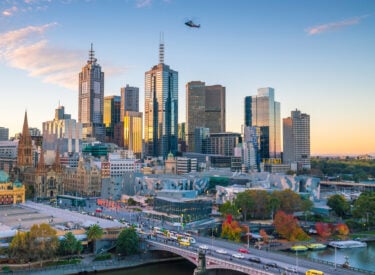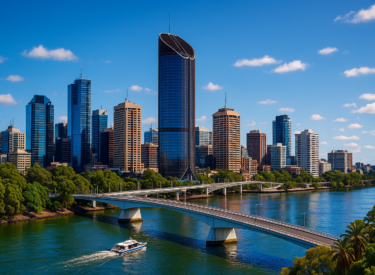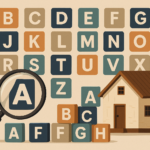
Key takeaways
Once accused of abandoning suburbia, millennials are now embracing it — just on a later timeline.
They delayed life milestones like parenthood, which pushed back traditional housing moves.
Millennials aren’t copying their parents — they’re updating the dream.
They want space, community, and lifestyle — but with hip cafés, Wi-Fi in parks, and espresso at indoor play centres.
Smaller backyards, digital connectivity, and lifestyle hubs are replacing old-school barbies and big lawns.
Millennials aren’t just buying homes — they’re redefining what livable, connected suburbia looks like.
Smart investors will track this shift and position themselves in affordable, infrastructure-rich, lifestyle-driven pockets on the suburban fringe.
There was a time when millennials were accused of killing the Great Australian Dream.
They were too busy sipping flat whites, travelling to Bali, and Instagramming their brunch to care about backyards or barbecues.
But as it turns out, the dream wasn’t dead, it was simply on hold.
Now, as this generation enters their 30s and early 40s, we’re seeing a dramatic shift.
The same millennials who once thrived in compact, urban apartments are now seeking space, community and family-friendly lifestyles.
But they’re not merely replicating what their parents did, they're reshaping suburbia through a modern lens.
For weekly insights and strategic advice, subscribe to the Demographics Decoded podcast, where we will continue to explore these trends and their implications in greater detail.
Subscribe now on your favourite Podcast player:
Millennials: the reluctant suburbanites?
As demographer Simon Kuestenmacher explained in our recent conversation on the Demographics Decoded podcast, millennials followed a very “traditional life stage cycle”, they just did it on a delayed timeline.
“We procrastinated collectively with having kids,” Simon said.
“So we had this long adolescence phase, living as dual-income households with no children. You could live in a small inner-city apartment, spend a lot on smashed avo, festivals, yoga retreats, and overseas travel.”
This lifestyle, of course, turbocharged inner-city café culture.
The apartments were too small to host friends, so millennials brought social life to “third spaces”—cafés, pubs, shared workspaces and yoga studios.
It was a defining characteristic of the generation.
But now, after delaying parenthood, many millennials are entering a new chapter.
The hipster pad with exposed brick and polished concrete doesn’t cut it once a baby enters the picture.
Suddenly, you’re looking for space, school zones, local parks, and a fourth bedroom for a home office or second child.
Why the urban fringe is booming
For most millennials, affordability dictates their move.
You won’t find a four-bedroom home with a study and a bit of garden in the middle ring suburbs, certainly not one within reach of the average income.
So they’re heading to the only place where space is still (somewhat) affordable: the outer suburban fringe.
But this isn’t just history repeating.
As Simon puts it, “It’s a replay of the suburbs they grew up in, but with a millennial coating.”
The backyards are smaller (if they exist at all), the gardens are easier to maintain, and the amenities are more digital.
They still want their café culture and third spaces.
What’s emerging is a new model of suburbia: less focused on backyard barbecues and more on lifestyle hubs, parks with Wi-Fi, and indoor play centres offering strong coffee and high-speed internet.
“Expect many more hipster cafés popping up in the urban fringe,” Simon noted.
“Even café owners are moving to the fringe, and they’re bringing the culture with them.”
What this means for property investors
This shift should be of keen interest to property investors.
The demand dynamic is shifting, and savvy investors need to position themselves accordingly.
The outer suburbs are no longer purely dormitory towns or low-growth backwaters.
They’re becoming vibrant, culturally rich, and demographically vital.
We’re talking about large cohorts of millennial families with dual incomes, looking for lifestyle, convenience, and schooling, not just space.
If you can identify the pockets of the outer suburbs that are future-proofed with infrastructure (especially transport), good schools, employment hubs and walkable amenities, you’ll be ahead of the curve.
However, caution is warranted.
As Simon warns, “Don’t buy based on a future train line, buy based on an existing one.”
The infrastructure promised by developers and governments can be delayed by decades, and that can dramatically impact long-term capital growth and livability.
A planning system under pressure
But here lies a major tension.
Our planning systems and councils are not keeping up with this demographic transition.
Local governments still approve developments slowly and inconsistently.
Community objections and environmental red tape, while important in principle, are often used to block necessary infrastructure and growth.
Simon argues that councils need to harness AI and digital tools to speed up approvals and unlock land faster.
“We are weaponising our planning processes,” he says.
“We need to empower decision-makers to push through infrastructure projects more efficiently. Right now, we're hamstringing ourselves.”
This creates a structural problem for our cities: growing demand for outer-suburban housing and infrastructure, but slow, risk-averse planning mechanisms that fail to keep pace.
Remote work, hybrid lifestyles and the "20-minute dream"
One of the biggest behavioural shifts millennials have embraced is remote and hybrid work.
It’s more than a preference, it’s become a necessity.
Commuting from Wyndham Vale or Oran Park to the CBD five days a week just isn’t feasible for working parents.
So the work-from-home revolution has made outer suburban living possible, perhaps even desirable.
It allows families to stay close to home during the week, avoid stressful commutes, and still access the city when needed.
However, this comes at a cost to businesses.
Millennials are now in their prime management years.
“They’re meant to be the middle managers mentoring younger staff,” Simon noted, “but they're not in the office. So knowledge transfer becomes a deliberate process now, it doesn’t happen organically.”
As a result, companies and governments alike need to rethink how suburban hubs are planned.
Millennials want more than just cheap housing, they want walkable suburbs, active transport links, and local job opportunities.
The 20-minute neighbourhood model, where everything you need is a short walk or bike ride away, hasn’t made its way into outer suburbia yet, but the demand is there.
Is the inner city at risk?
Not at all.
While millennials are moving out, the demand for inner-city living isn’t waning.
Migration is keeping the urban centres thriving.
As Simon explained, “Half of our migrants are international students; they don’t have families, they live alone or in shared houses, and they gravitate to the inner city.”
This means that while millennials make space, Gen Z and new migrants are filling the void.
Vacancy rates remain tight, and rents continue rising.
In fact, this turnover ensures liquidity in the market, creating opportunities for investors across multiple life stage profiles.
Reinventing the dream, not rejecting it
What’s clear is that millennials aren’t rejecting the Great Australian Dream; they’re reframing it to suit their values and life patterns.
They want what their parents had: safe streets, happy kids, local footy clubs, and good schools.
But they want it with better coffee, NBN, access to third spaces, and perhaps without the minivan.
Simon put it beautifully: “They want to recreate their childhood, but with their own spin. You still need a people mover, but instead of a Toyota Tarago, it’s a Ford Ranger.”
This isn’t nostalgia.
It’s evolution.
And if we’re wise, we’ll plan our housing, infrastructure, and investment strategies accordingly.
If you found this discussion helpful, don't forget to subscribe to our podcast and share it with others who might benefit.
Subscribe now on your favourite Podcast player:














